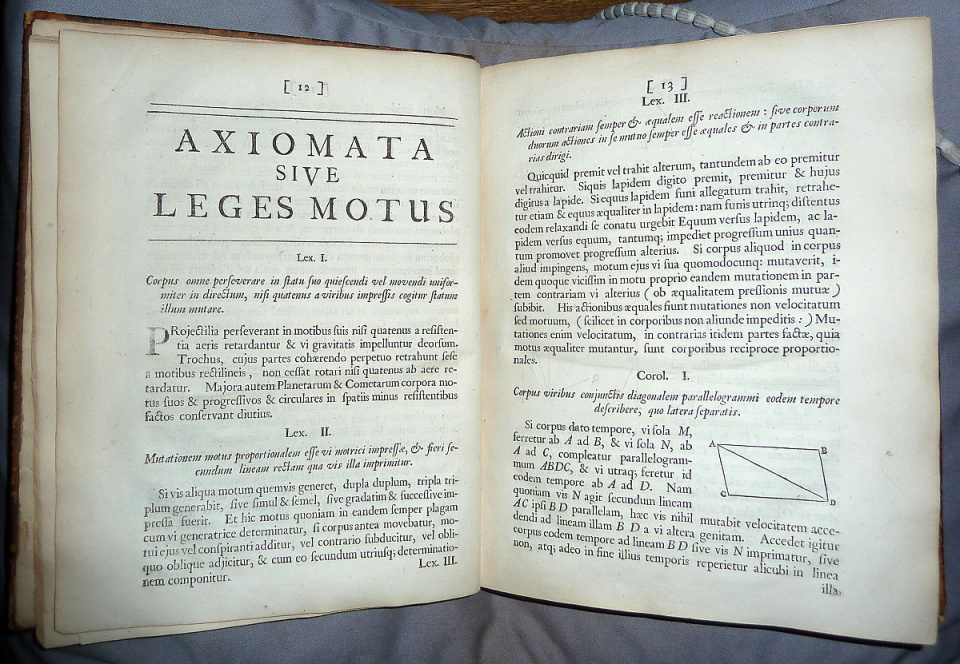So much better than a falling apple
There are several Oxfords, the most famous being one to which I don't normally have much access. But this evening I was a guest at a 'gaudy' (a 'celebratory formal dinner') at Magdalen College which included an exhibition in the college Old Library. This library holds a large collection of books published before 1800 including a first edition of Isaac Newton's Philosophiae Naturalis Principia Mathematica published in 1687 under the auspices of Samuel Pepys* (of diary fame) and Edmund Halley (of comet fame).
We asked if we could see it. The case was unlocked for us, the book was laid on a cushion and we could turn the pages. We didn't even have to hold our breath but I did. Having done typesetting myself quite recently made it feel even more immediate than other old books I have seen. The last thing I expected was to be allowed to take a photo (my ever-so-dainty evening bag contained only my smuggled camera and a phone) but, with nothing to lose, I asked. And the librarian said yes!
So here is the page where Newton first set out those three laws of motion that most of us stumbled across/over at school.
The dinner was good too.
Later
*By request, some more history:
The text of the first of the three books of the Principia was presented to the Royal Society at the close of April 1686. A dispute with Hooke led to Newton threatening to withdraw and suppress the book altogether, but Halley persuaded Newton to withdraw his threat. Samuel Pepys, as President, gave his imprimatur on 30 June 1686, licensing the book for publication. The Society had just spent its book budget (sound familiar, anyone?) so the cost of publication was borne by Edmund Halley, then acting as publisher of the Philosophical Transactions of the Royal Society. The first edition comprised three hundred to four hundred copies. If you want your very own ask Abe Books. The one they have is on sale for US$458,267.
An accidental fit for this week's word: classic


Comments
Sign in or get an account to comment.


